Seized drugs, weapons and money in Belgium © Belgian’s prosecutor office
My only experience with cocaine was as a child with toothache. Cocaine was my dentist’s analgesic of choice when it came to drilling or extracting children’s teeth. Dental problems are far from the thoughts of those seeking the welcoming oblivion the drug offers its users today, many of whom could barely function without it. These days, it’s viewed as a highly addictive stimulant that works on the central nervous system. Derived from the South American coca plant, it is used medically as a local anaesthetic for some surgeries on the eyes, ears, and throat, as well as in dentistry when I was young. When a person uses cocaine, it causes an increase in dopamine in the brain by attaching to the chemical’s transporters and increasing the amount of dopamine in nerve cells (neurons), modifying the way nerve cells communicate with each other. Cocaine can have, and frequently does have, long-lasting or even irreversible effects on the brain. Financially, however, for those involved in transporting it from the farms that grow it to those who sell it on the streets of Europe’s cities is an extremely lucrative enterprise. Cocaine is usually seen as a white powder, although it is often diluted by dealers who mix it with flour, baking soda, corn starch, and other substances to increase profits and weaken the potency. After all, for its dealers the aim is always to maximise profits, and if one dose fails to have quite the effect the customer was hoping for, then he or she is likely to buy more. It is, of course, strictly illegal, which ironically may be part of its attraction, especially to the young.

Not surprisingly, perhaps, the more you take, the more you need. Your brain gradually becomes desensitised to the drug and so it needs more and more to achieve the same euphoric effects. The people who trade in the stuff, of course, are utterly ruthless and oblivious to suffering. Their only aim, as you would expect, is to make a lot of money. It took the EU’s Europol to co-ordinate the actions of the Belgian Federal Police, the Dutch national police, the German regional police and Federal police to bring down one massive operation run by leading criminals, who were importing vast quantities of cocaine. They had the help of the Paraguayan National Antidrug Secretariat in closing one of the avenues into Antwerp and presumably destined for further distribution around Europe. The cooperative action by law enforcement bodies on that April day in 2022 resulted in 35 locations being searched, seventeen people being arrested (5 in Belgium, 11 in Germany and 3 in the Netherlands) as well as the seizures of expensive electronic equipment, documents, four vehicles, several very costly watches and real estate, including four apartments and bank accounts holding a total of €5.5-million. Cocaine smuggling is clearly a lucrative business, however distasteful and downright dangerous it may be for the end users.
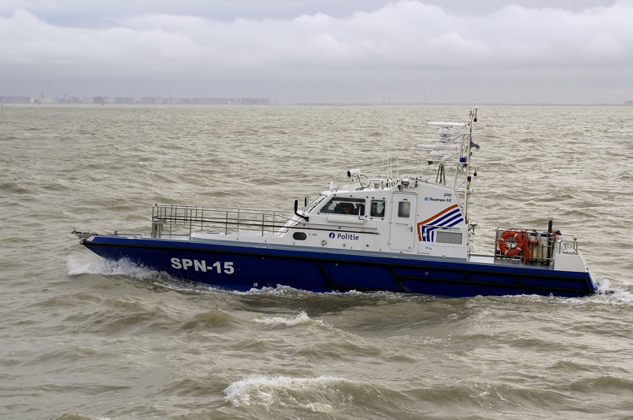
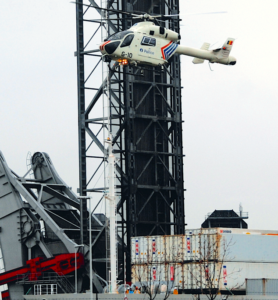
It’s a very big business and must involve a very large number of operatives, presumably including port workers. In 2022, Belgian authorities seized almost 110 tonnes of cocaine at the port of Antwerp, which was a new record at the time. Back in 2021 they’d seized the previous record amount: a mere 90 tonnes. Just before the 2022 seizure, an 11-year-old girl had been shot dead with no fewer than five bullet wounds. It may have been an accident, the girl having been an innocent bystander who died when the house she was in was sprayed with rapid fire from a Kalashnikov assault rifle, but it’s worth noting that she was the niece of a man suspected of being one of Belgium’s most important drugs traffickers. It’s not just the addicts who get killed in this murderous activity; very often, the gangs exert their evil influence over ordinary people, enforcing their rule by killing children or anyone else who gets in the way of profit. The victim’s uncle in this case was Othman el Ballouti, who is suspected of running a huge cocaine smuggling operation through the Port of Antwerp, while he hides away in Dubai, which has shown itself reluctant to arrest or extradite Belgian suspects. Locals lay bunches of flowers at the site of her murder, ironically at the bottom of a garage door with many bullet holes.
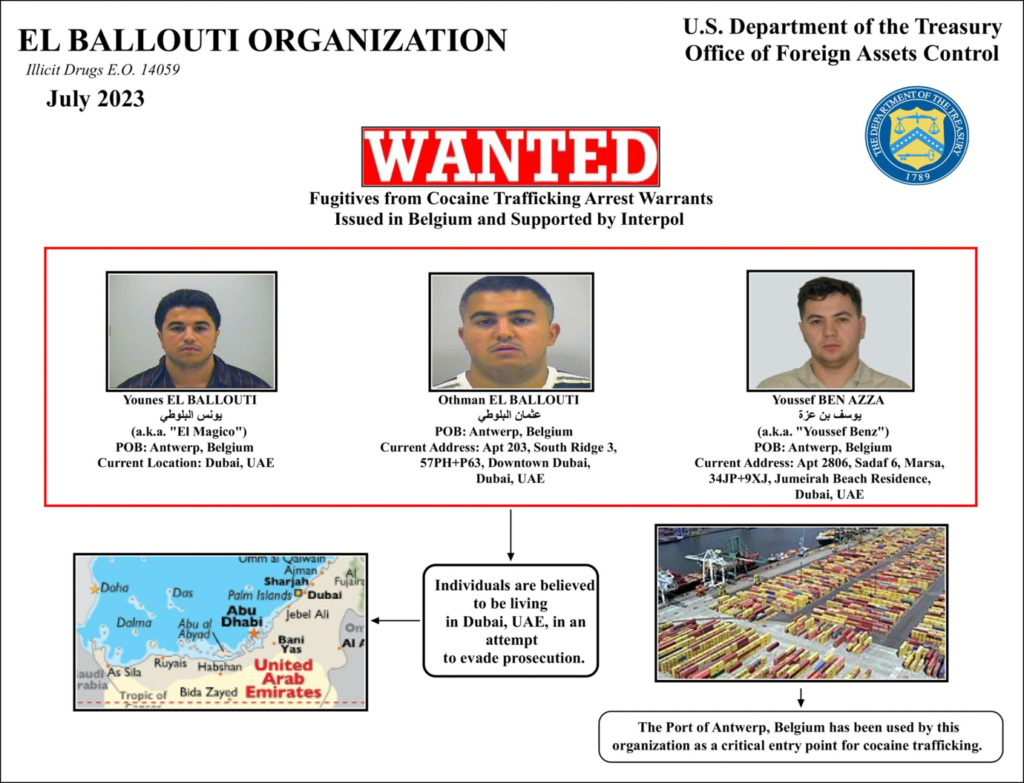
Drugs traffickers have found they can do well in Belgium, partly because of the old rivalries between French speakers and Flemish speakers. The port itself is so vast that no more than 2% of the containers unloaded there can be checked, which has led to an extremely lucrative trade in diamonds and gold, as well as easy access to a large transportation network with links to every part of Europe. Writing in The Parliament Magazine, journalist Mitchell Prothero says that at least 40% of Europe’s cocaine imports pass through Antwerp itself or other nearby ports. Perhaps that’s why Antwerp is experiencing a large-scale gang war among rival drug importers and dealers.
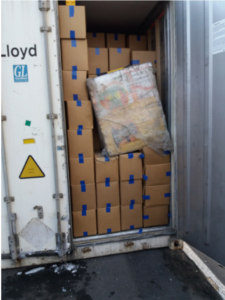
| OPEN DOOR POLICY AND LONG DELAYS
One of Belgium’s problems is bureaucracy, which slows down everything, including law enforcement. In November 2023, customs officials at Antwerp discovered more than seven tonnes of cocaine hidden in a cargo of bananas from Guayaquil in Ecuador. They also arrested seven adults and two minors who had been hiding in a container. It was the fourth such drugs seizure in just a few weeks. Security at Antwerp, however, wouldn’t fool a chimpanzee for long and three crooks were able to reclaim the impounded powder by surprising two unarmed employees and taking their ID cards to gain access to where the drug was stored, driving away with it unopposed. The criminals were clearly very well aware of the Antwerp port’s deplorable security measures. Another problem is that it often takes a long time for the Belgian authorities to destroy seized drugs, partly because of a shortage of incinerators and partly because of the snail’s pace bureaucracy involved. In this case, the criminals were able to spend half an hour loading packages of cocaine into their car. What’s more, the seized narcotics often remain stored at the port for many days, presenting greater opportunities for theft.
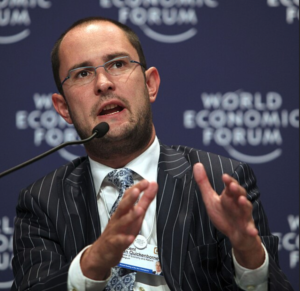
Indeed, Antwerp is a drug-smuggler’s paradise: long periods in store, unguarded, undestroyed and protected by a bureaucracy that has to be experienced to be believed. It’s very different from the Netherlands, for instance, where destruction of the seized drugs takes place straight away. There have been official calls for greater incinerator capacity, but it hasn’t happened yet. The demand came from the former Belgian Justice Minister, Vincent Van Quickenborne, but he then stepped down after failing to process an extradition request from Tunisia for an Islamist that the authorities considered “dangerous”, having murdered two Swedish football fans in Brussels. The theft of the seized cocaine was not the first such incident. Just three weeks before that, a confiscated cargo of cocaine was stolen by a gang from the Netherlands, although on this occasion the Belgian police caught them before they got away. The police have certainly had some success in their war on drugs and drug gangs, despite the problems posed by the gangs’ ruthless approach to human life. In one such incident, they dismantled what they called a “drug super-cartel”, which controlled a third of Europe’s trade in cocaine. They arrested 49 people in several countries, including six “high value suspects” in Dubai. Interpol, the international police organisation set up in 1923 to tackle serious criminality through co-operation among police forces, told the media that those arrested included “an extremely big fish”. The Dutch prosecutors involved said the drugs were coming “mainly from South America” and were being brought into Europe through both Antwerp and Rotterdam. Europol told journalists that this particular operation had netted 30 tonnes of cocaine and led to arrests in France, Spain, Belgium and the Netherlands. The cartel, said police, had been created to help in the trafficking operation and controlled one third of the entire cocaine trade in Europe.
| CATCHING BIG FISH IN A BIG NET

“The scale of cocaine importation into Europe under the suspects’ control and command was massive,” Europol told reporters, adding that two “high value” suspects linked to the Netherlands had been arrested in Dubai, along with two who had links to Spain and two more linked to France. One of the Dutch suspects, Europol told AFP on the condition of anonymity, was an especially important figure in the illicit drugs trade. Altogether, thirteen people were arrested in Spain, six in France and ten in Belgium, while fourteen people were arrested in the Netherlands in 2021 as part of the same operation. One of those seized by police was a 37-year-old man with dual Dutch and Moroccan nationality, picked up for allegedly importing thousands of kilos of cocaine into the Netherlands in 2020 and 2021. Another of those arrested was a 40-year-old Dutch-Bosnian national. Despite these high-profile successes, however, the cocaine keeps arriving and in record amounts. In 2020, for instance, 214 tonnes were seized in the region, which represents an increase of 6% over the previous year. The amount seized in 2022, however, was 300 tonnes.
The situation in Antwerp has become so worrying that the mayor, Bart De Wever, a Flemish conservative, has even suggested deploying soldiers on the site. Belgium’s Justice Minister, Paul Van Tigchelt, has refused, however, pointing out that the army does not have the legal power to make arrests. Despite joint police operations sometimes catching large cartels importing drugs, there are also bitter rivalries between various gangs involved in the trade, which are played out on the streets with bombs and bullets. Belgium’s new national drugs commissioner, Ine Van Wymersch has warned that the port of Antwerp has become the epicentre for the import of cocaine into Europe. She is arguing that the fight against drugs must be conducted “on a European scale”.
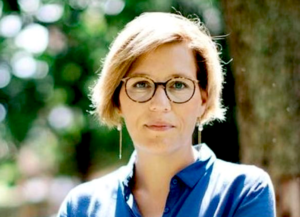
Recent police successes have led to Belgium now being engaged in one of the biggest drug trafficking trials in its history, with more than 120 suspects in the dock. The massive haul of suspected criminals came about after investigators cracked a large number of encrypted messaging apps. The drug trafficking involved was on a truly massive scale, and those on trial in Brussels come from not only Belgium but also Albania, Colombia and North Africa, with a trial involving so many people that it is being held in a high security courtroom in the former headquarters of NATO. The cartel in this case operated from 2017 to late 2022 and involved a large number of different criminal gangs. To capture those involved meant police raids in Belgium, Germany and Italy and the smuggling operation involved cannabis as well as cocaine, arriving from South America and also from Morocco. According to prosecutors, the drugs arrived in containers before being transported all over Europe. Police report that having cracked the encoded messages on Sky ECC and Encrochat apps, popular with criminals, they were able to look at the planning and operation of the drug smuggling operation. Belgium’s Justice Minister, Paul Van Tigchelt, whose decision not to use the army has been proved correct, told AFP that a thousand criminal convictions had been secured using evidence from the encrypted apps. ‘It is clear that we are dealing very hard blows to organised crime in our country,” he said, just before the trial began. The charges the suspects face include drug offences, of course, but also the trafficking of arms and belonging to a criminal organisation.
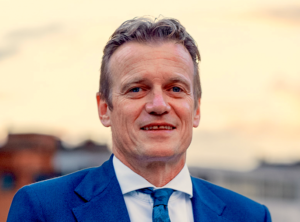
In total, 124 people are on trial, although a small number of them will be tried ‘in absentia’ because they are currently on the run. It’s claimed that the ringleader was an Albanian citizen, while prosecutors say the operation had what they called “structure and hierarchy” among the various criminal groups involved. The suspects, says AFP, are accused of having jointly operated cocaine processing laboratories in Belgium and final judgements are not expected earlier than the middle of 2024. Defence lawyers have accused the Belgian authorities of “a publicity stunt” for putting all the accused on trial together at the same time. They argue that the case should have been broken up and all the suspects judged separately. As it is, the forces of law enforcement have demonstrated to the criminal gangs that there really isn’t safety in numbers.
| A NEW FACE TAKES ON A WORSENING PROBLEM
Ine Van Wymersch is Belgium’s national drugs commissioner and it’s her task to take the fight to the traffickers. Since she took on the job, there have been record seizures of cocaine at Antwerp but also an increase in gang-related crime tied to the illicit drugs trade, with a growth in the numbers of synthetic drug laboratories and the production of cannabis. Belgium is keen to get to grips with the problem before it takes on the rotating presidency of the EU in the New Year. She must also somehow put an end to the inter-gang violence that has made Antwerp a dangerous city. She has denied to the media that Belgium is now a “narco-state” but she admits that it has become a strategic logistics hub for organised crime, which makes the country vulnerable, despite what she says is a growing awareness on the part of businesses and authorities. The criminal gangs, of course, are not going to go away so the most she can hope to achieve is to make life as difficult as possible for them, with an increased risk of them being arrested.
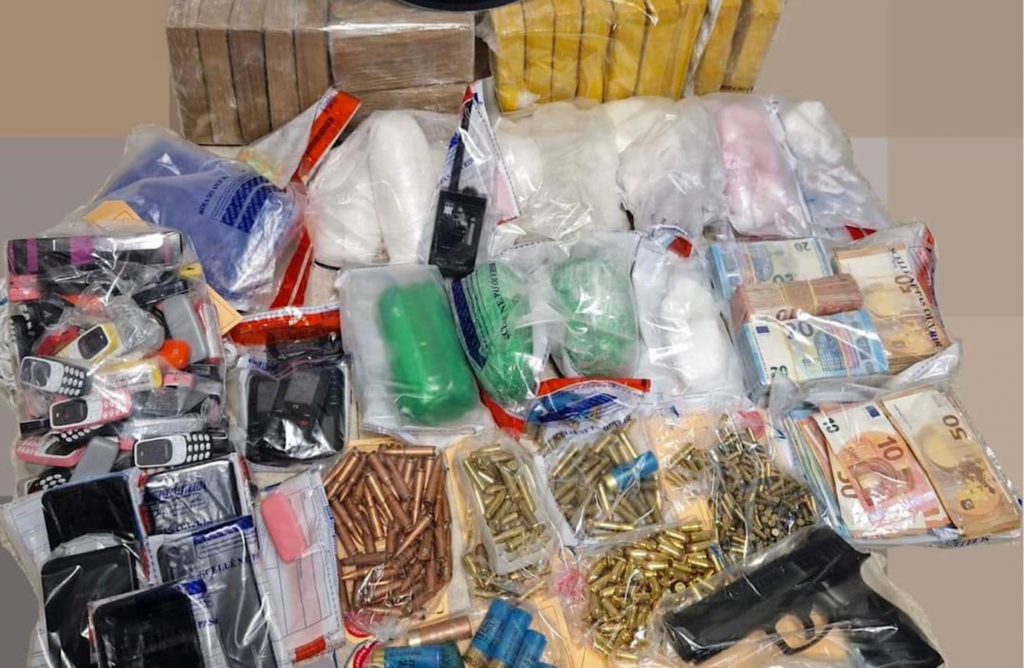
It’s never going to be easy. The port of Antwerp is the size of 16,600 football fields and has a yearly throughput of 240,000,000 tonnes of freight of all kinds. That is why it has become the most important point of entry for illicit drugs, among many, many legitimate goods, from motor vehicles to fruit and vegetables. The cocaine is often hidden among such innocent items and is therefore very hard to spot. Antwerp is also experiencing a greater volume of smuggled drugs than its rival, Rotterdam, as well as more drug-related violence. In Rotterdam, the amount of cocaine detected and seized fell from 73,000 kilos in 2021 (a record year) to less than 47,000 kilos. Antwerp’s volume is rising, reaching a peak of almost 110,000 kilos. Customs officers now say that Antwerp is “the top destination for criminals”. Controlling the crooks is a hazardous job, too, even for politicians. In 2022, four Dutch people were arrested for allegedly plotting to kidnap Belgium’s Justice Minister, Vincent Van Quickenborne, who was forced to go into hiding after grenade attacks linked to Belgian and Dutch criminal gangs. In 2018, 16 cars and 10 houses were damaged in the Belgian town of Deurne by gangsters throwing hand grenades. Antwerp’s mayor, Bart de Wever has warned about the risk of collateral damage and murders. He has described the current situation as a “national crisis”, with criminal gangs moving their centres of operation from Rotterdam, where security has been strengthened, to Antwerp, largely because the port is so massive and hard to police.
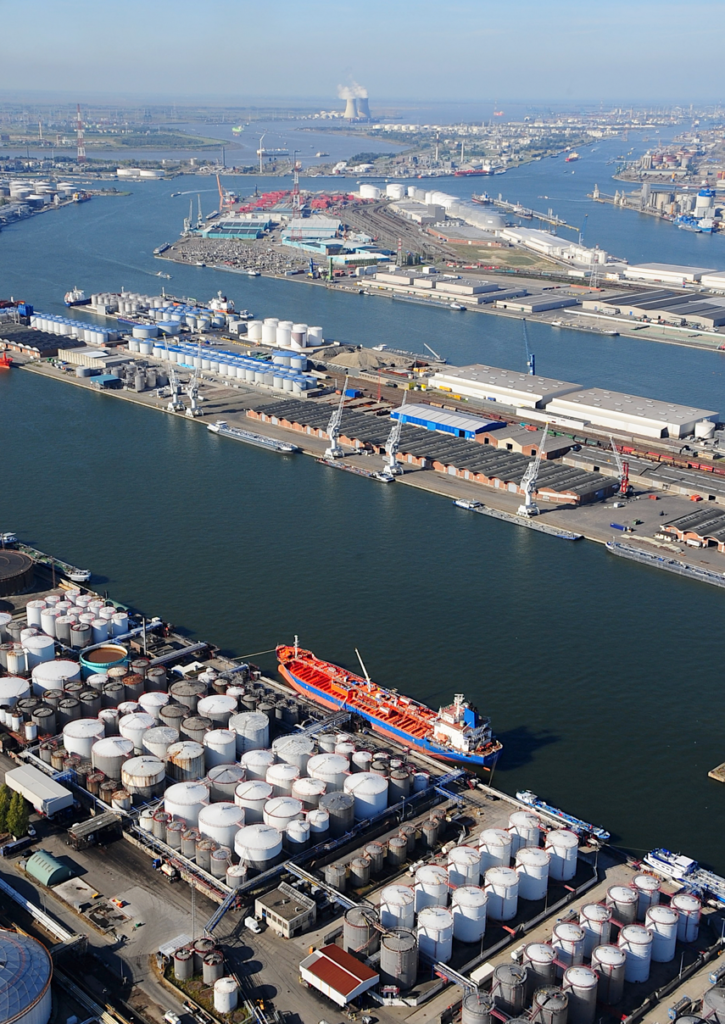
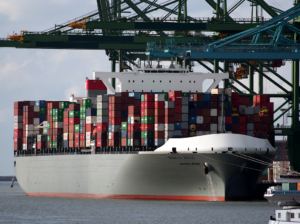
According to Europol, criminal gangs are also using Rotterdam and Hamburg, but it’s especially Antwerp they favour for getting the newly-arrived cocaine to the Netherlands, from where it’s distributed throughout Europe. “The epicentre of the cocaine market in Europe has shifted northwards,” Europol said. The organisation has produced a report on the problem jointly with the United Nations Office on Drugs and Crime (UNODC) in which it’s pointed out that the use of illegal drugs cost half a million lives in 2019, while disorders resulting from drug use resulted in the loss of 18-million years of healthy life. Everyone knows using illegal drugs is dangerous, but users (and addicts) persist in pursuing and consuming them. “Serious and often lethal illnesses are more common among drug users,” the report points out, “particularly those who inject drugs, many of whom are living with HIV and Hepatitis C already.” The very detailed report, which covers the whole world and every type of drug, says: “Despite the proven dangers, drug use persists and in some contexts proliferates.” People are often deliberately ignorant (or pretend to be) of the real risks their habit presents. “Over the past year,” (the report was published in 2021, so is here referring to 2020) “around 275-million people have used drugs, up by 22% from 2010.” The report further predicts that by 2030, “demographic factors project the number of people using drugs to rise by 11% around the world, and as much as 40% in Africa alone.” Most people would agree that it’s a depressing prediction, while the police are aware that in Europe’s case, the Port of Antwerp plays an important and deadly role.
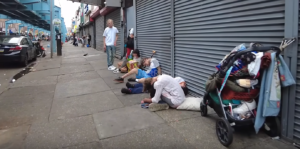
Part of the problem is the way we like to fool ourselves; you know the sort of thing: “Oh, one more drink won’t hurt,” or “I’m sure she won’t mind.” The UNODC report says that the potency of cannabis and its products has almost quadrupled in recent years, yet most adolescents prefer to go on believing otherwise; the percentage who consider it harmful has dropped by as much as 40% over the same time period. Worried? You should be, according to Europol, UNODC and Interpol, to name but three. The dangers posed by using cocaine are even affecting our sewage. The EU drugs agency, the European Monitoring Centre for Drugs and Drug Addiction (EMCDDA), together with the SCORE (Sewage analysis CORe group Europe), examined wastewater from some 54-million people in more than a hundred European cities, carefully examining what they had flushed down the toilet. For the scientifically minded, it means the samples were analysed for the main urinary metabolites (substances produced when the body breaks down drugs) of cocaine and cannabis, which are benzoylecgonine (BE) and THC-COOH (11-nor-9-carboxy-delta9-tetrahydrocannabinol). I don’t suppose the drugs’ users are too concerned. The concentrations were highest on a Monday after the drugs consumers had presumably enjoyed a narcotic-filled weekend. Such traces were found in all the cities tested but Antwerp came out worst, with cocaine use doubling over the last two years. Tests revealed 2,381 milligrams per 1,000 people per day, far ahead on the next biggest consumers, Tarragona in Spain, with 1,610 milligrams, and Amsterdam, with a relatively modest 1,142, according to the EMCDDA. Apart from cocaine, seemingly the narcotic of choice for most users and addicts, at least in and around Antwerp, the research also showed up traces of amphetamine, methamphetamine, MDMA (Ecstasy), ketamine and – surprise, surprise – cannabis. This type of research doesn’t help to track the use of heroin: The specific metabolite of heroin: 6-monoacetylmorphine, has been found to be unstable in wastewater. A report prepared by the EMCDDA shows that the technique, however, although originally developed for other public health reasons and very useful during the COVID-19 pandemic, is proving invaluable in keeping tabs on the growing use of cocaine in particular.
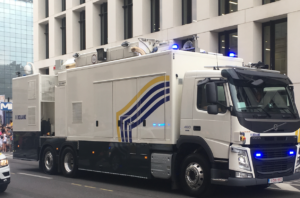
After seizing 110 tonnes of cocaine in the port of Antwerp alone in 2022, there are now plans to step up the recruitment of staff and the acquisition of scanning equipment capable of finding the stuff arriving. The UN Office on Drugs and Crime (UNODC) now reckons that some 13.2 million people use hypodermic needs to take narcotics, 18% higher that previous estimates suggested. As a result, the number of people suffering from drug use disorders has soared to 39.5-million, a 45% increase over a single decade. In addition, the growing abuse of drugs leads to environmental damage and human rights abuses on a huge scale, not to mention murder and other crimes. The UNODC wants to see greater efforts at law enforcement, although it’s unlikely to stamp out drug abuse. Antwerp, it seems, has become the capital of a huge and deadly criminal underworld, funded and perpetuated by a popular taste for narcotics and a vicious disregard for human life on the part of the traffickers.

